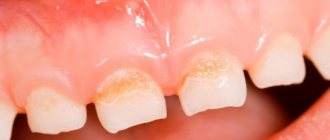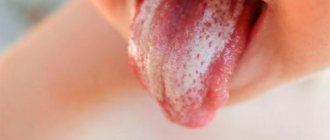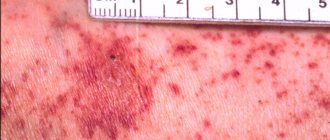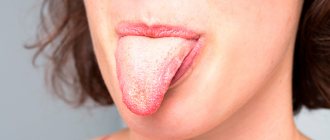Statistics say that every second woman has suffered from thrush at least once in her life. This is not surprising, since the causative agent of the disease, a fungus from the genus Candida, is always present on the mucous membranes of the vaginal area. The disease (candidiasis) develops when optimal conditions are created for the life of the fungus, and its population rapidly increases.
Figure 1 - Candidiasis is a common disease
The Candida family includes about one and a half hundred species of fungi. Of these, 20 species are capable of living in the human body. In 90% of cases, the disease is caused by fungi of the Candida albicans variety.
Candida is transmitted:
- during primary infection - during childbirth or during the first year of life;
- in case of secondary infection - during intimacy (almost 100% probability), through contact and household contact (underwear, household items, food).
If the word “Candida” appears in your test results, do not rush to the pharmacy. The main thing is not the presence of the fungus, but its concentration and the presence of signs of disease. Thrush manifests itself:
- in women - in the form of vulvovaginitis (colpitis);
- in men - in the form of balanoposthitis.
The main signs of thrush in women:
- itching, burning, irritation, swelling, redness of the mucous membranes;
- curdled discharge from the genitals, the smell of the discharge is sour milk;
- pain during sexual intercourse;
- burning when urinating.
If the disease is diagnosed in one “half,” everyone needs treatment. Therapy “one at a time” does not make sense - all the fungi will come back after the first intimacy.
You should not have sex until the thrush is completely cured. If the disease is diagnosed in your sexual partner, and the symptoms do not bother you, you will still have to be treated.
The main signs of infection with Candida fungus in men:
- itching, burning sensation;
- redness, swelling of the head, foreskin, whitish coating;
- pain during intercourse.
Figure 2 - Candida is diagnosed in women and men
Candidiasis is diagnosed by:
- external signs;
- results of bacterial culture of smears from the vagina and urethra;
- PCR.
How to cure thrush in a woman?
Candida loves warm, moist places with minimal air access, so the fungus is more than comfortable on the vaginal mucosa. To get rid of an unpleasant neighborhood, you need to use the following drugs:
- local action: vaginal suppositories, tablets, creams with econazole, clotrimazole, miconazole, econazole (Clotrimazole, Pimafucort);
- systemic action: tablets, capsules with fluconazole, itraconazole (Nystatin, Fluconazole, Difluzol, Diflucan);
- drugs to strengthen the immune system, probiotics, symbiotics (Wobenzym, Lactovit, Dactiale, Derma-Pro, Vagilak, Viferon).
Figure 3 - Untreated disease spreads quickly
On average, the course of treatment takes from 3 to 6 days. Fungal spores mature within 20 days, so a second course of treatment may be necessary. Some medications (such as Betadine) can be used during menstruation.
In 20% of cases, the treatment prescribed by the doctor does not help. If thrush continues to bother you after a week:
- This is not candidiasis. You will have to retake tests and undergo additional examinations.
- the disease is not caused by Candida albicans, but by another type of fungus that is more difficult to destroy;
- this is a relapse that is possible with diabetes, during antibiotic therapy, or reduced immunity.
If relapses of candidiasis occur more than 4 times a year, the doctor will prescribe preventative treatment.
Figure 4 - Chronic and recurrent candidiasis requires lifestyle changes
Topical medications can cause inconvenience - leaking and staining clothes. So that they are evenly distributed over the surface of the vaginal mucosa and do not cause discomfort, it is best to use them before bed. Suppositories and tablets should be placed approximately in the middle of the vagina. Medicines placed too close will leak out, and if placed too far away they can injure the delicate cervix.
If you have thrush, douching and other methods of “washing there” are prohibited, as this causes an imbalance of the microflora.
Causes of thrush in a child
Because the child’s immunity is still too weak and this contributes to the development of favorable conditions for the development of candidiasis (candida fungi are the first of the microscopic fungi that a child encounters at birth).
In the first week of life, so-called thrush (damage to the mucous membranes of the oral cavity) may develop in the form of a cheesy white coating on the inner surface of the neck, tongue and gums. Basically, this process is temporary and goes away during the first month of life, and with a weakened immune system, thrush can be recurrent and difficult to treat. In addition, if the skin is damaged, the process can spread to natural folds and in the area of diaper rash. Healthy skin can resist the effects of fungi on its own, but damaged skin cannot do this, and a fungal infection can become more severe. Breastfeeding plays an important role because breast milk helps repopulate the sterile intestines with beneficial microorganisms. Therefore, the body of bottle-fed children is more susceptible to infection entering the body.
The process of fungal development is aggravated by wearing diapers, which create a “greenhouse effect” and due to the warm, humid environment, fungal infections multiply quickly. A healthy breastfed baby cannot develop candidiasis. If thrush appears again after treatment, this should be assessed as a signal that the immune system is weakened. In children, candidiasis can either be temporary or become a serious disease requiring treatment from a specialist.
Recurring oral thrush in infants can cause damage to the fingernails. This occurs in infants who prefer their finger to the pacifier. As a result of the lesion, the nail plate becomes deformed, thickens, the periungual fold turns red and a white mass is released from under it.
In girls, candidiasis can develop into candidal vulvitis, and in boys, balanoposthitis can occur (redness and a white cheesy coating appear in the area of the urethral opening). These phenomena may not bother the child, but are sometimes accompanied by itching, burning and pain.
In older children, Candida fungi can cause allergic diseases, which, in turn, affect the skin, mucous membranes and intestines. Therefore, children with allergic diseases should undergo a comprehensive examination, including for possible candidiasis.
How to cure thrush in a man?
Help to overcome candidiasis:
- locally - creams with clotrimazole;
- systemically – fluconazole (drugs Fluconazole, Diflazon, Forkan, Medoflucon, Mikosist).
The duration of the average course of treatment is 5 days.
During treatment, underwear and towels should be changed daily. Hygienic procedures are carried out using products without fragrances or additives. Despite the fact that most drugs are used topically, alcohol should not be consumed during treatment.
Figure 5 - Men are prescribed drugs of local and systemic action
How to avoid relapse of candidiasis?
Candida is an opportunistic microorganism that is usually present in the microflora of intimate areas. In order not to provoke its excessive reproduction again:
- strengthen your immune system;
- do not wear tight synthetic underwear;
- observe the rules of personal hygiene;
- take enough vitamins, reduce the amount of fast carbohydrates;
- reduce the amount of foods and drinks that contain mold and yeast;
- use contraception;
- avoid stress.
Figure 6 - During treatment of thrush, you will have to adjust your diet
Regardless of lifestyle, thrush can develop:
- when hormonal levels change (pregnancy, taking birth control pills, endocrine diseases);
- after operations;
- as a result of antibiotic therapy;
- during serious illnesses;
- with vaginal dysbiosis;
- after hypothermia.
Treatment plan
How to treat vulvar candidiasis (thrush) in children of school age, and not only?
Basically, treatment involves eliminating the pathogen and stopping its reproduction, which will therefore eliminate the symptoms. Only a good specialist can treat the disease correctly and effectively, who can prescribe:
- antifungal drugs and antiseptics (topically);
- antibiotics;
- ointments and medicinal baths;
- therapy to restore and strengthen the immune system;
- therapy to restore the microflora of the reproductive system.
Which course of treatment will be chosen and prescribed depends on the specific case and the reasons that led to vulvovaginal candidiasis in a teenage girl and a smaller child.
Repeated appointment
At the follow-up appointment, the doctor assesses the child’s condition and checks how effectively the chosen regimen works. If no positive dynamics are observed, then repeated diagnostics and selection of new methods for treating thrush in the child are prescribed.
Control reception
The control reception is an important point. The doctor prescribes it to see how the child recovers after a full course of treatment, to see if there are any relapses or suspicions of them. It is also possible to prescribe physiotherapy and rehabilitation (for example, if a long course of antibiotics has been prescribed). A follow-up appointment is usually scheduled after 21–30 days or later.
Treatment result
The disease can be cured, but the timing of treatment is individual and depends on the stage and causes of thrush in young children or teenage girls. All details of treatment are discussed individually at a doctor’s appointment. If there is a suspicion that the parents are infected, then both parents are treated.
Prevention
Thrush in children is a fairly common occurrence, especially under “favorable” conditions for the disease. To protect the child, it is necessary to take preventive measures:
- carry out proper personal hygiene of the child in accordance with age;
- wear the correct underwear;
- normalize nutrition (moderate or limited consumption of sweets, starchy foods and fast foods, more fruits, vegetables, etc.);
- Strengthen your immune system by taking vitamins and exercising.
Compliance with the rules of personal hygiene at home and in public places will also help avoid the occurrence of vulvar candidiasis and other unpleasant diseases in a teenage girl or young child.
What happens if thrush is not treated?
Figure 7 - Thrush that is not treated in time is fraught with serious problems
The diagnosed disease must be treated. Despite the fact that Candida fungus is an opportunistic microorganism, the body needs help to cope with overgrown colonies and neutralize the consequences of their vital activity. Untreated disease:
among women:
- will reduce immunity, resulting in the development of secondary sexually transmitted infections;
- will provoke erosion of the mucous membrane;
- disrupts the menstrual cycle;
- will cause inflammation of the cervix.
for men:
- will lead to prostatitis, vesiculitis, which can cause infertility.
How to cure thrush during pregnancy?
Statistics say that Candida fungi are detected in 80% of expectant mothers. Before giving birth, you must say goodbye to them. If this event is postponed until later, the baby will become infected during childbirth. Transmission of the fungus is also possible after - during feeding or hygiene procedures. This is fraught with thrush in the mouth, in girls - on the genitals, and a series of subsequent problems with the baby’s health.
To treat expectant mothers, gynecologists prefer to use topical medications - suppositories, tablets, creams. Suppositories Pimafucin and Primafungin can be used in any trimester of pregnancy, Terzhinan tablets - in the second. Systemic drugs are prescribed if the disease cannot be cured locally. Only the doctor prescribes medications and outlines the treatment regimen, depending on the clinical picture; amateur activity is unacceptable here.
Figure 8 - Self-medication of candidiasis is unacceptable
Causes
There are many conditions for the occurrence of thrush:
- if the rules of hygiene for a newborn are not observed - there is no boiling regime for feeding supplies, breastfeeding hygiene is not observed, unwashed toys, teethers that are not treated daily, and in general all items that are used in caring for the child;
- if the mother suffers from candidiasis, then most likely the disease will be transmitted to the baby through contact;
- if the mother has vaginal candidiasis, it will be transmitted to the child during childbirth (and even during cesarean section);
- with frequent regurgitation, a favorable environment for the development of fungus is formed in the mouth;
- if the baby drinks little liquid, then thrush may also develop on the dry mucous membrane of the mouth;
- Candida fungi multiply quickly in a sweet environment, so it is undesirable to give your child sweets, especially drinks;
- teething, diarrhea, colds - all this weakens the immune system, which means the possibility of fungal growth;
- premature babies also often suffer from thrush;
- antibiotics suppress the natural microflora of the body and enable the disease to intensify;
- you can become infected during long-term treatment in a hospital;
- for chronic diseases - for example, diabetes.









